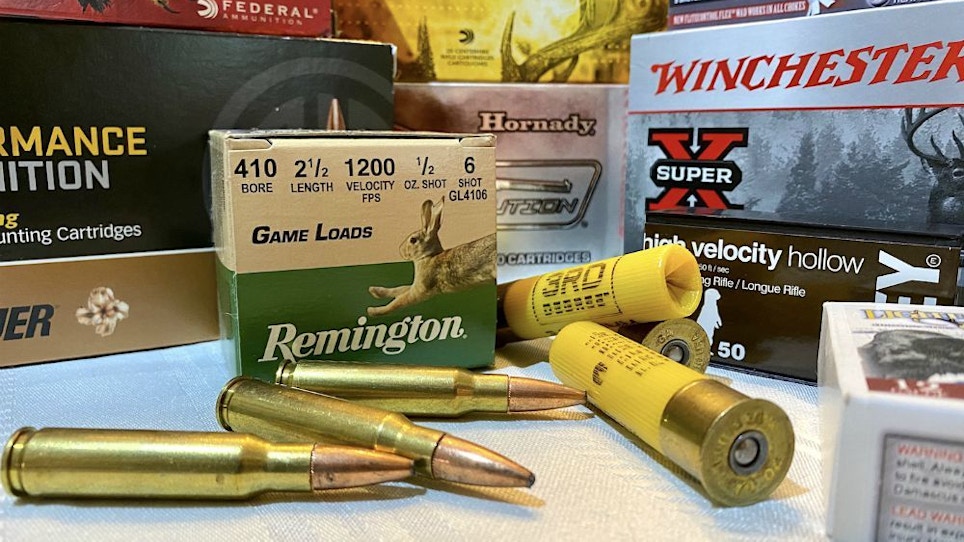Ammunition often doesn’t get the focus it deserves, but in addition to its own significant sales potential, it’s a product category that can send sales in other product categories soaring.
In order to maximize sales potential here, it’s important to understand how the individual pieces of the overall puzzle fit together. Although there are several distinct categories of ammunition, it’s important to focus significantly on only two: generic ammo and application-specific ammo. Translate that to mean inexpensive commodity-level ammo and more expensive but higher performance designer ammo.
There is no mystery here. Generic ammo is like generic anything in that it is a commodity and can be treated as such. The idea is to use generic ammo at commodity pricing to get the attention of the buyers and get them in the door. They can happily purchase all of it they want, and once they’re engaged, you have an opening to upsell them with mission-specific ammo that typically costs significantly more and carries a higher margin.
For example, when customers are practicing at the range, they can hone their skills with generic ammo and then use enough specialized ammo to be ready for their intended purpose, whether it’s serious competition, hunting or self/home defense.
The whole idea is to encourage them to shoot more, because the more they shoot, the more sophisticated they become and the more they will be able to appreciate what the specialized ammunition can do for them.
The good news is that with today’s technology and manufacturing capabilities, companies can crank out truly great ammunition in huge quantities. The basic performance of most ammo is better than it has been historically. Hence, much of the difference in both price and performance has to do with the bullets themselves.
Traditional cup-and-core bullets are easy and inexpensive to produce, which means they can be sold at bargain prices. Nothing new here. But in recent years, high-performance ammunition has evolved significantly, both in terms of performance from established cartridges and newly introduced high-performance cartridges.
There is no question that the market is hot for cartridges like the various Creedmoors and the Precision Rifle Cartridges. Only recently has there been a pretty good supply of more or less generic loads available for these new high-performance cartridges. That’s fine because there are plenty of generic loads available for everything from .223 Remington through .308 Winchester to .30-06, .270 Winchester and any of the .300 magnums.
But there also has been a concurrent spike in the number of truly high-performance loads for these traditional cartridges — hunting loads that feature high-tech bullet designs that extend effective range while delivering improved terminal ballistics in the target animal.
Fortunately, the manufacturers make it very clear what the higher-performance ammunition is designed to do, what animals it is intended to be used on and at what distances. It doesn’t take much sales acumen to be able to discuss with customers the potential advantages higher-priced, more specialized ammo offers.
Where the discussions can become really effective is in the realm of home/self-defense. There are increasing numbers of specialty loads intended for defense use. Again, most of the discussion centers around bullets designed for that single purpose. For example, some are designed for maximum expansion with significant penetration, and some are designed not to go through walls on the other side of defensive shots.
The point is that the specialty ammunition is more than worth its added price since it helps stack the odds on the side of the defender. Most customers, however, will not shoot high volumes of the more expensive ammo. Most will practice with more generic ammo and then check to make sure the specialty ammo works well in their guns. This presents a two-stage sales opportunity with each customer — a bulk sale of the generic ammo along with a smaller volume of the more expensive stuff for when things get serious.
Of course, there is nothing wrong with someone using the specialty ammo for all their shooting, but the truth is that trying to make that happen can get in the way of other sales opportunities.
The fascinating dynamic involved in ammo discussions is that they naturally lead into other things, ranging from guns to sights, holsters and other accessories. For example, if it’s a cartridge designed for long-range shooting or hunting, it makes sense to talk about precision rifles, or to focus on scopes and binoculars. Success at longer ranges requires a complete package, and there is good reason to couch discussions about any one element of the complete rig with all of the other elements. Customers may not intuitively connect those dots, but you can help them.
When the topic of conversation is ammunition for defense and protection, it’s natural to discuss other guns or cartridges that might better suit the customer’s needs. This is an area where what a customer thinks he or she wants may be different from what they really need. It never hurts to expand the horizons of such conversations. Even if nothing happens right away, the seed has been planted.
The point is that ammunition can be a gateway to all kinds of discussions that won’t happen by themselves. The more topics you touch on, the greater the potential for additional sales.
Something to think about.






